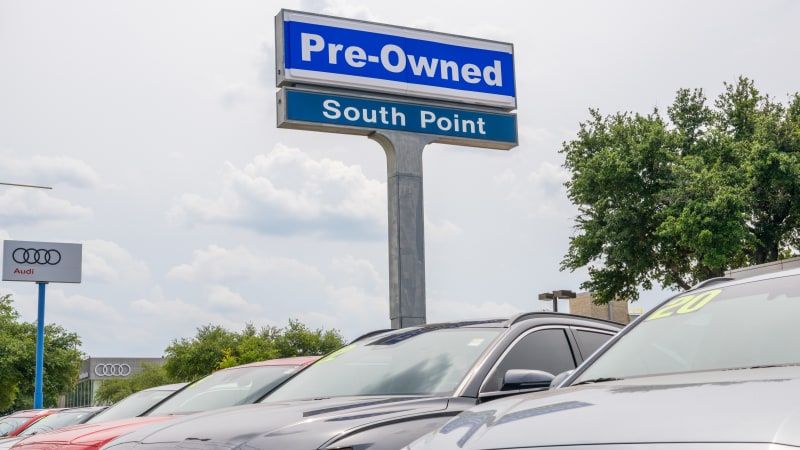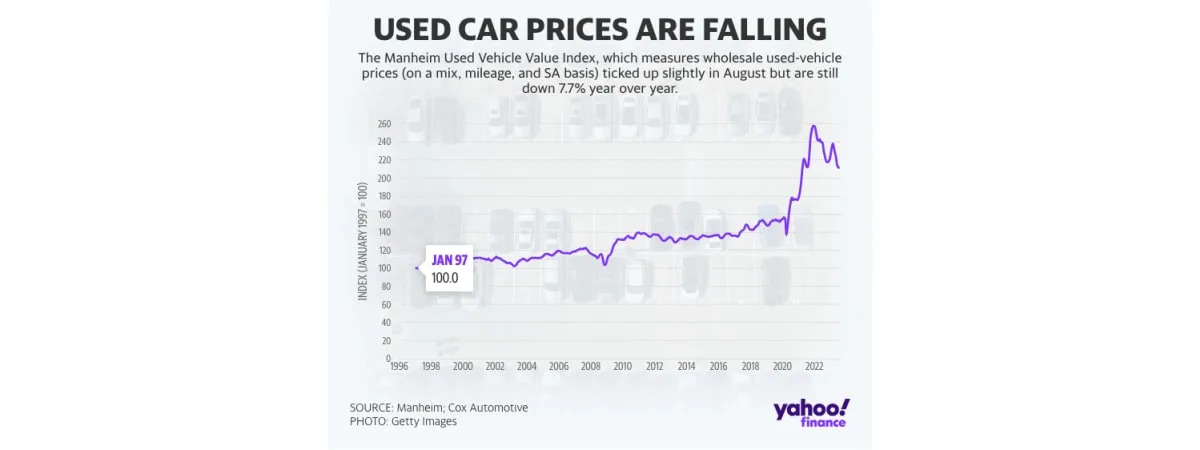Gasoline fuels U.S. inflation, but at least new and used car prices look better

New and used car prices are continuing to moderate, according to the latest government inflation data released Wednesday morning. The bottom line is that Americans may have more flexibility in buying cars, though a looming auto strike may dent those prospects.
For the month of August, consumer prices for new autos were up 0.3% compared to July and up 2.9% year over year, with the yearly figure coming down considerably compared to the prior month’s 3.5%. The used car market saw even more moderation, with prices down 1.2% for the month of August, and dropping 6.6% year over year. The year-over-year used car figure is notable, as it dropped a full percentage point compared to July.
Gasoline prices, which jumped 10.6% in August after rising 0.2% in July, accounted for more than half of the increase in the CPI last month. Gasoline prices accelerated, peaking at $3.984 per gallon in the third week of the month, according to data from the U.S. Energy Information Administration. That compared to $3.676 per gallon during the same period in July.
Read more: Buying a car? Here’s how to shop for insurance
Car prices, in particular for used vehicles, seem to be coming down faster compared to inflation in the broader economy, which saw overall prices rise 0.6% month over month and 3.7% on an annual basis. The uptick was driven by the recent increase in energy prices.
Used vehicle trends are also coming down at the wholesale auction market, which tracks overall trends that are a precursor to what will be seen at the retail level.
Manheim’s Used Vehicle Value Index, which tracks the auction market, finds that while used vehicle prices rose 0.2% in August, prices were down 7.7% year over year. In fact, Manheim’s data showed August marked the 13th month in a row that the index fell compared to a year ago, though it fell more steeply in the prior month of July.
That being said, experts at Cox Automotive (which owns Manheim) believe prices may not fall much further.
“Used market conditions have been quite consistent for a few months and are not likely to change much, even with the larger push toward balance; sales are slightly stronger than expected, inventory remains tight, and prices are holding at levels around 6% below last year at the same time,” said Cox Automotive analyst Chris Frey in a statement. “These factors are expected to prevent any substantial decline in wholesale prices through year-end.”

Turning to the market for new vehicles, another pain point for customers is rising interest rates and the effect it’s having on affordability. Interest rates for new vehicles climbed to 7.4%, marking their highest point since 2008, automotive research site Edmunds said in a note earlier this week. Edmunds also said the average monthly loan payment for new vehicles climbed to an all-time high of $738.
Finally, a looming UAW strike against the Big Three automakers (Ford, GM, and Stellantis), which could happen as soon as Thursday night, could be another factor that pushes new car prices higher and may even lift used car prices as well.
“Although inventory has improved year over year, the impending UAW strikes might put additional strain on the fragile inventory situation,” Edmunds said.
Currently, new car inventory has rebounded from pandemic- and supply chain-induced shortages, with certain cars having over 90 days of supply at dealer lots.
But if a work stoppage occurs, new car inventory will be depleted, leading to supply shortages at Big Three dealers and potentially leading to non-Big Three automakers seeing more demand for their products and shrinking supply as well.
Includes Reuters
Read more coverage on where inflation stands:
Pras Subramanian is a reporter for Yahoo Finance. You can follow him on Twitter and on Instagram.
Click here for the latest economic news and indicators to help inform your investing decisions.
Read the latest financial and business news from Yahoo Finance







